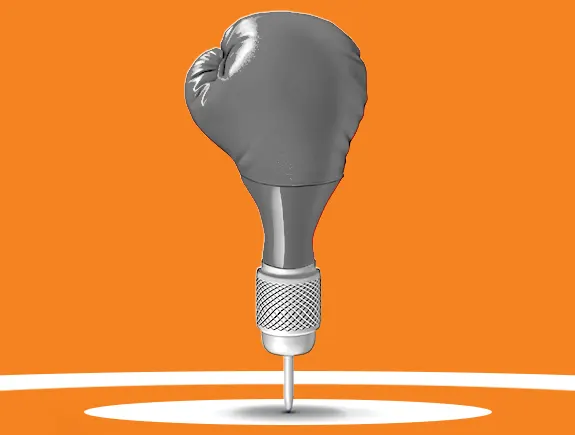The designer has just clicked send and sent the visuals to the client for approval. On the one hand, he is happy and proud, because he has completed his part of the work, and on the other hand, his nervousness is increasing because he wants to hear the client’s opinion as soon as possible.
The importance of feedback for a designer is huge because with its help what he is working on can become even better. But sometimes the feedback consists of only 4 words: I don’t like it and that’s all. This kind of feedback is one of the things that doesn’t mean anything to a designer, so if you don’t know how to help him, either learn or don’t ever do this to a designer. In one of our previous blogs, we wrote about sentences that annoy designers, so be sure to take a look at them before writing feedback.
Whether you are submitting your own opinion, as a client, on logo design or packaging design, or you are doing it as a manager of a company, it is very important that you learn how to do it the right way. That is why we have prepared some useful tips below, which will help you to be more precise in evaluating the designer’s work next time. Note that these tips can also be applied to other employees in full-service marketing agencies.
1.Ask questions
A successful design project is based on collaboration and asking the right questions, which will strengthen the communication between the design team and the client. Instead of saying nothing more than “I don’t like it” or sending a list of individual elements that need to be changed, take another approach. This means opening the discussion by asking questions so that nothing is assumed and the channel of communication is always open. In this way, we get a lot of information from you, as clients, and learn about your needs and the needs of your target group.
2.Communicate problems and challenges, not solutions
We understand that it’s very tempting when you look at a design solution to suggest changes to the parts you don’t like or don’t seem to be working. Instead, it’s better to point out the potential “problem” and why you think the proposed solution isn’t good. Let’s take for example the design of the newsletter and the place where we put the call to action field. Maybe you don’t like that place because you think customers will respond better if it moves to another place. Explain to us why it is better for the target group and help us find the best solution together. When you explain to us what the problem is, the designer will get more information, which will help him suggest some better solutions.
3.The focus must be on strategic goals
Visual design is subjective, so something that we like, the client may not like, and vice versa. That is why it is better to stick to previously defined strategic goals so that we do not deviate from the path that has already been set. In this way, the feedback discussion will be productive, but it will also push the entire project in the right direction. Instead of simply looking at the design, try to remember the goals you have set, as well as the brief, but also the target audience, and then think about whether the design fits into that framework. For example, if you have a webshop, consider whether too many colors will distract from the product and whether this is the best solution for the background of the site or maybe it is better to choose a simple monochrome background.
4.Comprehensive feedback
For the success of a design project, it is very important that you establish a clear path to providing feedback, especially when there are multiple decision-makers involved. Let’s include the example in the explanation again, as it will make it clearer. We are familiar with a situation in which several decision-makers from the client’s company leave comments on the project, which are, to say the least, contradictory.
When this happens, not only does the designer waste valuable time reading comments and trying to understand them but the designer is also under pressure to decide which comments to prioritize. And that is not and should not be part of a designer’s job. To avoid such a scenario, we ask clients to provide us with unique feedback, which represents the comprehensive opinion of all team members. We also advise the client to designate one person who will be in charge of communication.
5.Don’t forget to praise what is well done
We all like to receive confirmation and praise when we do something well. Although feedback mainly focuses on getting comments that will improve the design, it is also good when the client knows how to praise the parts of the visual that he particularly liked. In this way, not only do we get additional encouragement and motivation for further work, but it also enables us to better understand the client’s wishes. This way we can build a knowledge base of what our clients like and offer them more ideas that are close to their visual standards.
Feedback is important for the success of the project
To sum up this blog post with perhaps the most important sentence, the one you should always keep in mind when a client asks you for feedback – if you want a successful project, you need to know how to give good feedback. Pay attention to details, and be precise and comprehensive when providing feedback. If you apply these 5 tips, you will certainly contribute to better communication between the agency and your team. If you need additional tips on how the agency and the client can find a common language, be sure to read the text on our blog, which brings plenty of useful tips on this topic.

















